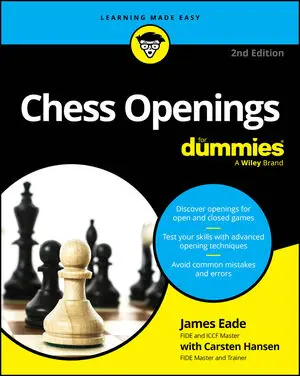The Swiss system
Most weekend tournaments in the United States are run according to the rules of the Swiss system. The Swiss system orders all players by their rating (and ranks unrated players alphabetically) and splits the list in half. The top player of the top half is paired against the top player of the bottom half, and so on, until the bottom player of the top half is paired against the bottom player of the bottom half. In case of an uneven number of players, the bottom-most player is usually given a full-point bye (which means they are paired in the next round as if he had won — after all, it wasn't their fault that an opponent wasn't available). Swiss tournaments can accommodate a large number of players — even a thousand or more — and determine a winner after only five or six rounds of play during a weekend.Winners get one point, draws score one-half point, and losers get zero points. In the next round, winners play winners, losers play losers, and so forth, following the same procedure of dividing the lists in half and pairing the people in the two halves accordingly, within the various score-groups.
Gradually, you begin to play players of your approximate strength because — in theory, anyway — you should be scoring roughly the same amount of points against the same kind of competition. The strongest players, or the players having the best tournament, are increasingly likely to play one another as the tournament goes on. The winner is the player who scores the greatest number of points.Usually, the first rounds of a tournament run under the Swiss system involve mismatches. Strong players play weaker players, especially early on in the tournament. Some players use a dubious strategy, called the Swiss Gambit, designed to avoid the toughest competition. This strategy involves allowing a draw with a weaker player, which gets the gambiteer easier pairings (the winners play other winners, but the gambiteer plays someone else who only drew) in the next few rounds. The hope is that in the later rounds, the strongest players will be playing each other — and the gambiteer will sneak into the prize money by playing inferior competition. This strategy, like any other designed to manipulate results, is just as likely to backfire as succeed. Who knows whether you'll really get weaker pairings? In all cases, you should play your best.
Round-robin tournaments
A round-robin tournament is one where everyone plays everyone else. Naturally round-robins are designed for fewer players. These tournaments are regarded as a more accurate judge of a player's performance than Swiss system tournaments because they don't involve "lucky" pairings. Round-robin tournaments are used to determine most national championships and are the norm in international tournaments. A drawback to this type of tournament is that it normally takes a longer period of time to complete and is therefore more expensive to produce.An offshoot of the round robin is the Quad, where the tournament is divided into groups of four players of roughly equal strength, who then play one another. This type of system is popular in the United States because it's inexpensive and avoids mismatches.






